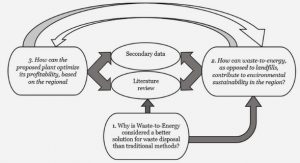Get Complete Project Material File(s) Now! »
RIGHT TO SELF-DETERMINATION, ANONIMITY, PRIVACY, CONFIDENTIALITY, FAIR TREATMENT; AND PROTECTION FROM DISCOMFORT
In this study, participants were provided with a detailed explanation of the purpose of the study in the form of written and verbal explanations. The participants were informed about their rights to decide to participate in the study, without any form of coercion and about their rights to withdraw from the study without fear of being discredited. Informed consent was obtained from the participants before they could partake in the study. The participants were guaranteed that all the information they provided would be treated with confidentiality. Pseudonyms were used during the interviews and transcription of data so that no information could be linked to a particular participant. To enhance privacy and dignity, the interviews took place at a private place chosen by the participants where they felt comfortable. Audio-recordings were kept in locked cupboards, and the participants were informed about how the findings of the study would be disseminated. All participants were treated the same, irrespective of their background. No participant was given preference over the others. Participants were treated with respect, and the diversity of their contributions was acknowledged. The researcher acknowledged that the context of this study was sensitive due to the vulnerable nature of LGBTI participants, and the negative experiences that they endured due to discrimination. The researcher anticipated the possibility that the participants could be distressed during and/or after the interview. Therefore, should the participants become distressed as a result of the interview, the researcher was prepared to contact the counsellor, Ms. Delta Tladi for debriefing so as to deal with any emotional crisis that might have arisen from the interview process. Nevertheless, in this study, none of the participants became obviously distressed during the course of the interviews. In addition, the researcher provided the participants with an information sheet (see Addendum H) indicating that they could contact the counsellor or their preferred counsellor should a need arise after the interview process
INTEGRATION OF THE CORE CATEGORY INTO LITERATURE
In this section, the core category presented in Chapter 5 will be related to the research literature, positioning and justifying its relationship to the literature and the chosen theories. The intention is to highlight how the core category that emerged in this study has supported, added to and/or challenged the literature and theories as cited. Comparing the core category to extant literature seeks to enhance insight into the theory that emerged from this study and its concepts, and further highlights the contributions of this study towards new knowledge (Glaser 1978:32; Charmaz 2006:168.). In addition, the categories will be related to the concepts included in the conceptual framework constructed for this study. A constructivist grounded theory approach that this study persuaded, has provided the conceptual framework that has helped to explore the core category informing the substantive theory of this study. The core category revealed the meanings, processes and contexts for the studied phenomenon of facilitating LGBTI youth-inclusive PHC, and has resulted in the theorising of this phenomenon. Engaging both LGBTI and nurse participants made this study unique, because it incorporated both groups of participants’ perspectives, which proves to be rare in the available literature. During the literature review, it was discovered that there was limited research aimed facilitating LGBTI youth-inclusive health care, where the outcome was as frank as what emerged from the participants in this study. Studies by Röndahl (2009:151) and Dorsen (2014:2) revealed that previous studies on LGBTI patients and their health care issues mostly focused on their perceptions and experiences in health care, and neglected to focus on the nurses’ or health care providers’ experiences and perspectives on interacting with LGBTI patients in clinical care. Most studies that investigated the nurses’ perspective with regard to caring for LGBTI patients have been obviously absent (Knight et al. 2014:662) or obsolete, with much of it being greater than 10 years old (Dorsen 2014:11-13). Only a few recent studies that focused on health care providers’ perspectives on LGBTI health care issues has been conducted (Kitt 2010; Poteat et al. 2013; Yan 2014; Dorsen 2014). Therefore, it was critical to consider the LGBTI participants’ experience of being cared for by the nurses, and the nurse participants’ experiences of caring for LGBTI youth in PHC, as well as the meaning that they attached to those experiences.
CHAPTER 1: INTRODUCTION AND BACKGROUND OF THE STUDY
1.1. INTRODUCTION
1.2. BACKGROUND TO THE PROBLEM STATEMENT
1.3. HEALTH CARE NEEDS OF LGBTI YOUTH
1.4. RATIONALE OF THE STUDY
1.5. PROBLEM STATEMENT
1.6. SIGNIFICANCE OF THE STUDY
1.7. RESEARCH QUESTIONS
1.8. AIMS AND OBJECTIVES
1.9. CONCEPT CLARIFICATION
1.10. ASSUMPTIONS OF THE STUDY
1.11. THEORETICAL FRAMEWORK FOR THE RESEARCH
1.12. DELIMITATION OF THE STUDY
1.13. METHODOLOGY OF THE RESEARCH
1.14. CONTEXT OF THE STUDY
1.15. STUDY POPULATION AND SAMPLE
1.16. DATA COLLECTION
1.17. DATA ANALYSIS
1.18. RIGOUR
1.19. LIMITATION OF THE STUDY
1.20. ETHICAL CONSIDERATIONS
1.21. DISSEMINATION OF RESULTS
1.22. ORGANISATION OF THE CHAPTERS OF THE STUDY
1.23. CONCLUSION
CHAPTER 2: SUBSTANTIVE LITERATURE REVIEW
2.1. INTRODUCTION
2.2. SEXUALITY AND SEXUAL ORIENTATION
2.3. CLASSIFICATION AND DE-CLASSIFICATION OF HOMOSEXUALITY AS A MENTAL DISEASE
2.4. THE HEALTH CARE NEEDS OF LGBTI PEOPLE
2.5. EXPERIENCE OF DISCRIMINATION
2.6. DEVELOPMENT OF POLICIES AND STRATEGIES TO PREVENT DISCRIMINATION IN HEALTH CARE SERVICES
2.7. PROVISION OF CULTURALLY COMPETENT CARE BY HEALTH CARE PROVIDERS
2.8. LITERATURE LIMITATIONS
2.9. CONCLUSION
CHAPTER 3: RESEARCH METHODOLOGY
3.1. INTRODUCTION
3.2. RESEARCH PARADIGM
3.3. RESEARCH FOCUS
3.4. RESEARCH QUESTIONS
3.5. RESEARCH METHODOLOGY
3.6. CONTEXT OF THE STUDY
3.7. DATA ANALYSIS
3.8. MEMO WRITING
3.9. USE OF LITERATURE
3.10. RIGOUR
3.11. PRESENTATION OF FINDINGS
3.12. LIMITATIONS OF THE GROUNDED THEORY METHODOLOGY
3.13. CONCLUSION
CHAPTER 4: DESCRIPTION OF THE FINDINGS
4.1. INTRODUCTION
4.2. CATEGORIES AND SUB-CATEGORIES
4.3. CATEGORY 3: SEEKING UNDERSTANDING ABOUT LGBTI PEOPLE AND THEIR HEALTH CARE NEEDS THEIR HEALTH CARE NEEDS
4.1: ESTABLISHING THERAPEUTIC RELATIONSHIP
4.5. THE EMERGENT CORE CATEGORY: REFRAMING PERSONAL AND PROFESSIONAL VALUES
4.6. CONCLUSION
CHAPTER 5:DEVELOPMENT AND DESCRIPTION OF THE CORE CATEGORY
5.1. INTRODUCTION
5.2. LOCATING RESEARCH METHODOLOGY
5.3. CONCEPTUALISATION
5.4. OVERVIEW OF THE MAIN CONCERN AND THE CORE CATEGORY
5.5. OVERVIEW OF THE CATEGORIES THAT FORMED THE CORE CATEGORY
5.6. CONCLUSION
CHAPTER 6:DISCUSSION AND INTEGRATION OF LITERATURE IN THE CORE CATEGORY
6.1. INTRODUCTION
6.2. INTEGRATION OF THE CORE CATEGORY INTO LITERATURE
6.3. OVERVIEW OF MEZIROW’S TRANSFORMATIVE LEARNING THEORY AND ITS APPLICABILITY TO THE CORE CATEGORY
6.4. INTEGRATION OF THE CATEGORIES AND SUB-CATEGORIES INTO LITERATURE CHAPTER 7: THE SUBSTANTIVE THEORY OF FACILITATING LGBTI YOUTH-INCLUSIVE PHC
7.1. INTRODUCTION
7.2. THE PROCESS OF THEORY SYNTHESIS
7.3. PRESENTATION OF A SUBSTANTIVE THEORY OF FACILITATING LGBTI YOUTH-INCLUSIVE PHC
7.4. THEORY DESCRIPTION
7.5. THEORY DESCRIPTION
7.6. RELATIONSHIP STATEMENTS
7.7. SYNTHESISED THEORY
7.8. EXPANDING THE THEORY
7.9. RELEVANCE AND CONTRIBUTION OF THE THEORY TO THE KNOWLEDGE BASE
7.10. RECOMMENDATIONS FOR THE APPLICATION OF THE THEORY
7.11. POTENTIAL AREAS FOR FURTHER STUDY
7.12. CONCLUSION
CHAPTER 8: RECOMMENDATIONS AND CONCLUSIONS
8.1. INTRODUCTION
8.2. MOTIVATION OF THE STUDY
8.3. CRYSTALLISATION OF KEY FINDINGS AND CONTRIBUTION TO NEW KNOWLEDGE
8.4. CONTRIBUTION TO THEORY, RESEARCH AND PRACTICE
8.5. USEFULNESS OF GROUNDED THEORY IN THIS STUDY
8.6. THEORETICAL SENSITIVITY
8.7. RECOMMENDATIONS
8.8. LIMITATIONS OF THE STUDY
8.9. DRAWING CONCLUSIONS
8.10. CONCLUSION
9. REFERENCES






